Interview with Fiber Artist Lucia LaVilla-Havelin
By JASMINA WELLINGHOFF, Editor
Lucia LaVilla-Havelin has been a working artist for more than 50 years, using the traditional techniques of “women’s work” to create original art that addresses contemporary subject matters. Her work has been exhibited in dozens of exhibits in Texas and the U.S. On Aug. 12, her first solo museum exhibition will open at the Brownsville Museum of Fine Arts. We spoke to her recently on the shady patio of the Green Restaurant at the Quarry.
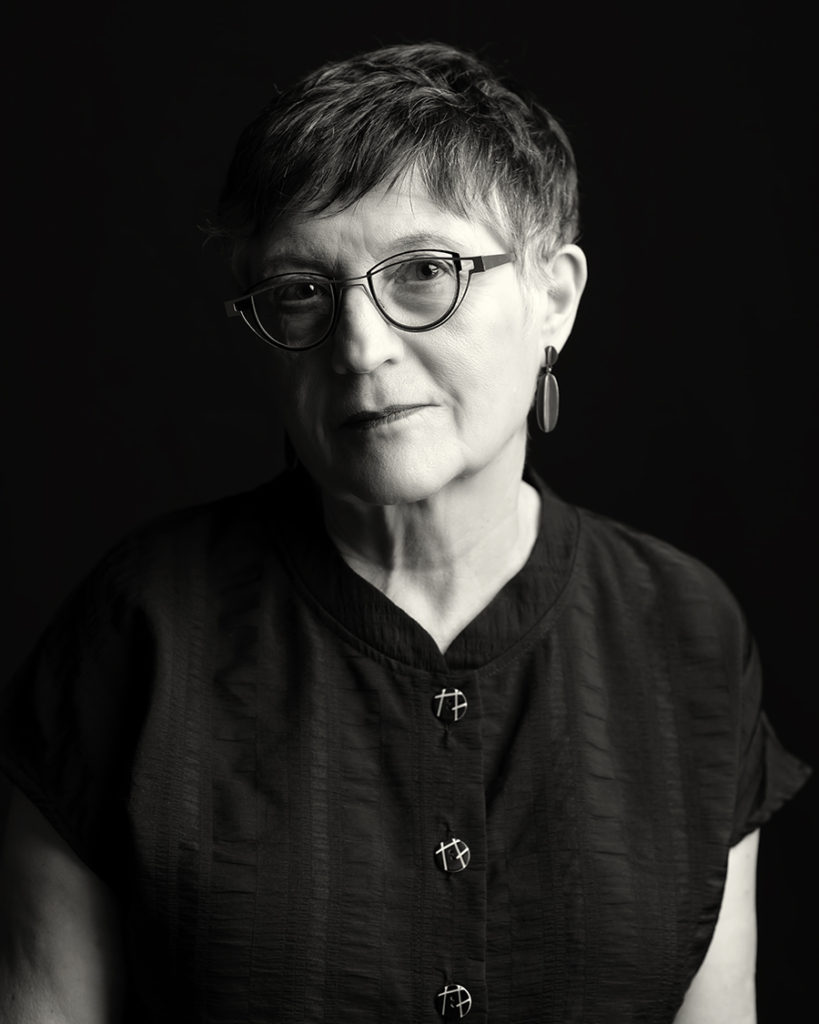
How to you define what you do?
I call it embroidery. A lot of people think it’s done on a machine. It is not. I do it all by hand. I also call it fiber art or textile art, and I just define myself as an artist. To me, it’s painting, only I am painting with thread. Form and color are very big in my work. All the designs are my own. As I am working, the design takes a life of its own.
How did you develop an interest in embroidery?
I have been doing this for almost 50 years. In the mid -70s, I started out with weaving. But, actually, I think I have been interested my whole life. My mother taught us to knit and sew, and she made all our clothes. Then, when I was in college, I was an exchange student in Copenhagen, Denmark, where I lived with a family. It was just a husband and wife and me. She, the lady, always did stitching. So, whenever we went anywhere, we would always have our stitching with us. It’s very calming, quiet work. If they were speaking Danish to each other, I just did my work.
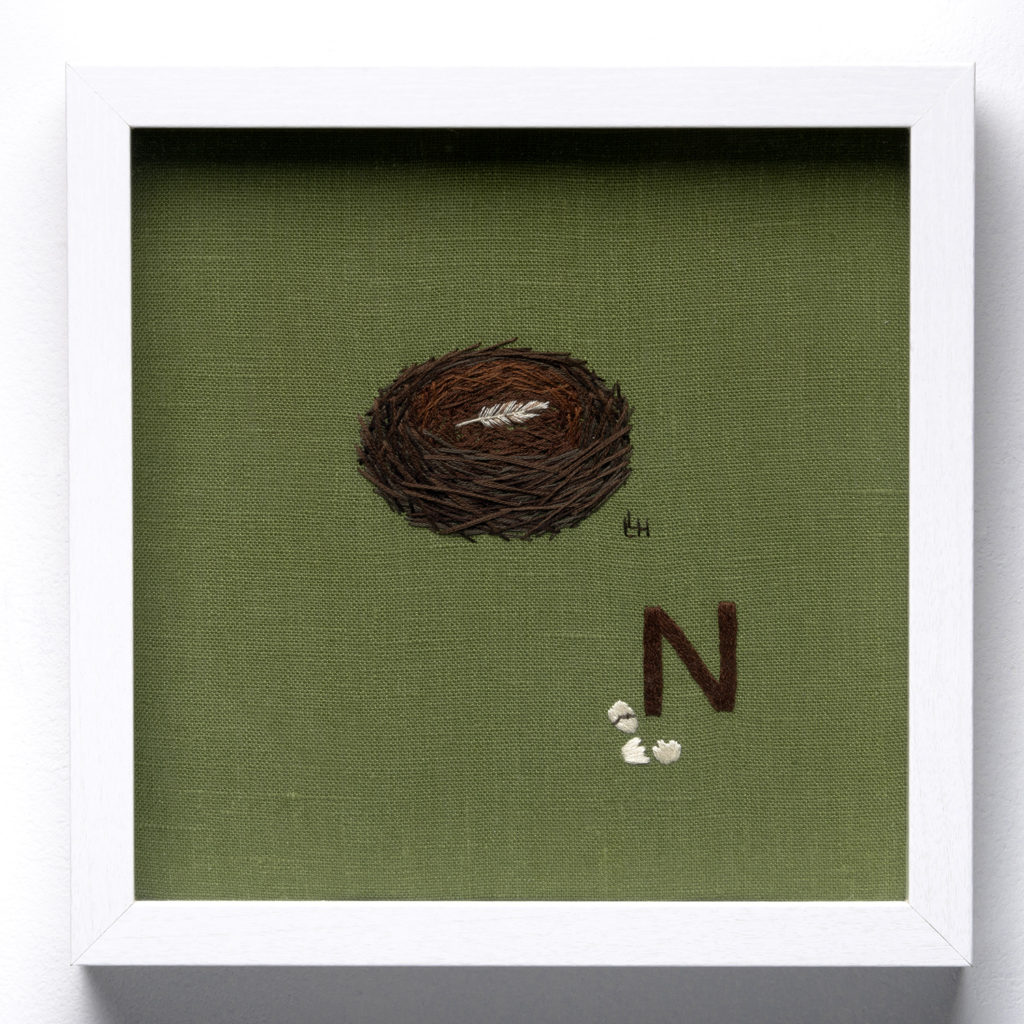
I used to weave very fine table linens in the 1970s and sell them at art fairs. But I kept injuring my back and had to give up weaving. So, I said to myself “What am I going to do? Weaving was my identity; I had a loom and a studio in my house. Then I remembered how calming and peaceful it was when I was stitching in Denmark. So, I started doing needle point, again. I started by doing images of my studio and other rooms, thinking of rooms that Matisse did. Later, I just found things that I was interested in. I would do images of torn-down factory buildings, for instance. They were paintings in stitches. I did that for many years. I have always done work that means something, that has a political element. Back in the 80s, I did a piece called “Love Canal” where all the dumping took place (tons of chemical waste). The name of my Brownsville exhibit is “The Meditative Activist.” I don’t make decorative pieces.
When did you starts exhibiting the “embroidery paintings”?
I was represented by a gallery in Rochester, New York. And then I was in other shows, too. Unfortunately, in 2011, I had to have my shoulder replaced because of arthritis. It hurt when I had to draw the needle out. I could no longer do it. That’s when I started doing the type of embroidery I am doing now. I am no longer using a canvas with holes in it. I am using linen fabric and cotton embroidery floss. (It doesn’t require the same wide arm movements.)
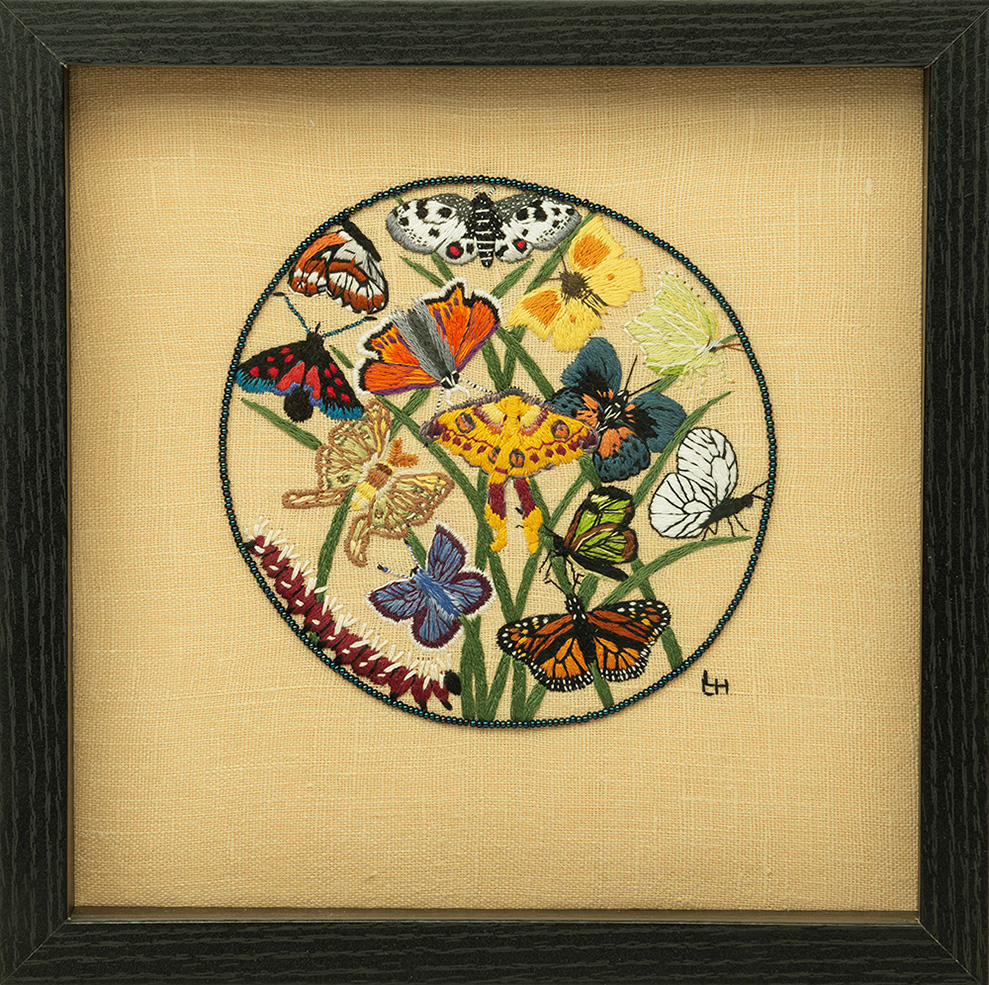
Right after we left Rochester, I was involved in curating a very large show of non-functional, non-traditional baskets. That show got picked up by the U.S, Information Agency and traveled to Africa, so Jim (her husband) and I traveled to Zimbabwe to open the African tour of the exhibit. After that, we moved to New York where I worked for the Pace Primitive Art Gallery. I did not exhibit while we were in New York. I restarted doing my own work again about two years later.
You said that your art, says something, stands for something, that it’s not just decorative. Tell us about the upcoming Brownsville show?
“The Meditative Activist” exhibition will have several components. Twenty-six pieces are my Illustrated Alphabet series, which was my pandemic project. At that time, I was thinking of children who were having trouble learning on Zoom, literacy issues we are having in this state, and also, I wanted to do something that was fun for myself.
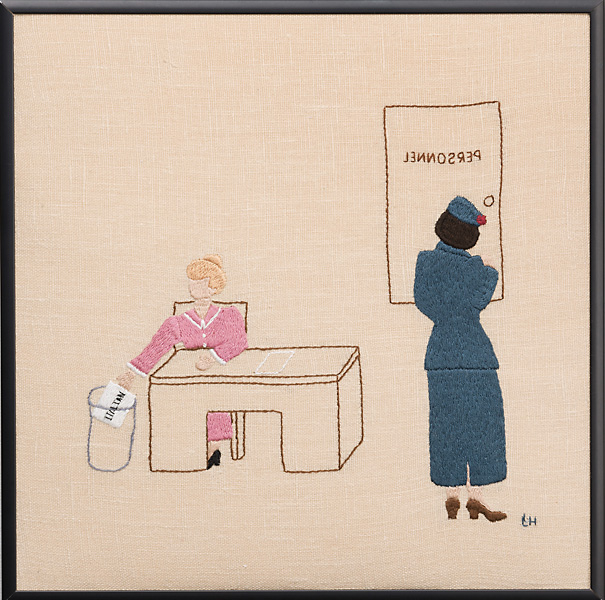
I like to work in series and I like to have a narrative. So, another series is Family Stories. Each piece has its own narrative but put together they become a series. “Family Stories” is about my family but there’s an edge to it, too, again, a political element. There’s one piece called “Need not Apply” and it’s dedicated to my mother. When my mother was unmarried in the 30s, she applied for a job at the telephone company in Rochester, New York. After the interview, she turned to leave and she saw her application being thrown in the trash. She was Italian. At that time, they didn’t want to hire Italians. There’s also the piece, “The Carpenter Takes a Lunchtime Nap,” which is about my grandfather as a carpenter making caskets.
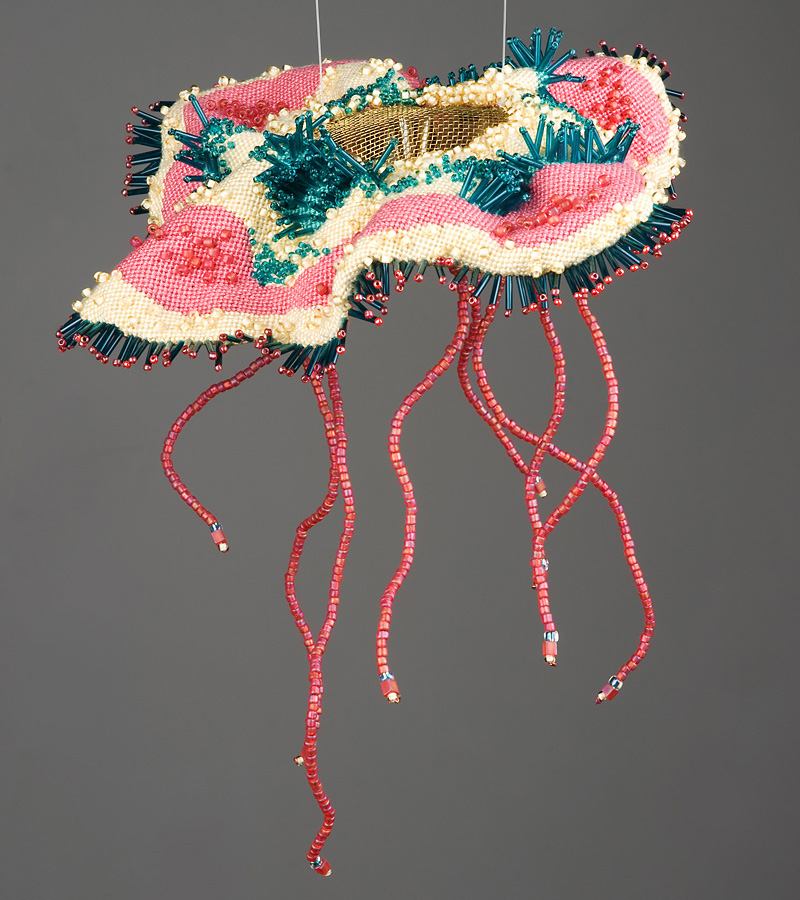
Another series is about climate change and the Earth. It’s called “Focus Earth.” Those pieces are a celebration of the marvels of nature in hopes that they will spur conversation (about preservation). There’s one piece called “Heritage Brackenridge,” which is about cutting old trees in Brackenridge Park to build a party venue. Other pieces feature insects, birds, butterflies and more.
How does it feel to have an exhibit opening where you can see people’s reactions to your work?
You are a little nervous because you are putting your soul out there for people to see but it also makes me very proud that I am an artist, and I love being an artist, and other than my marriage, it’s the most important thing in my life.
—————————————————————————————
“The Meditative Activist” will be on view Aug.12-Sept. 9; Brownsville Museum of Fine Art, 660 E. Ringgold St., Brownsville; http://bmfa.us
.
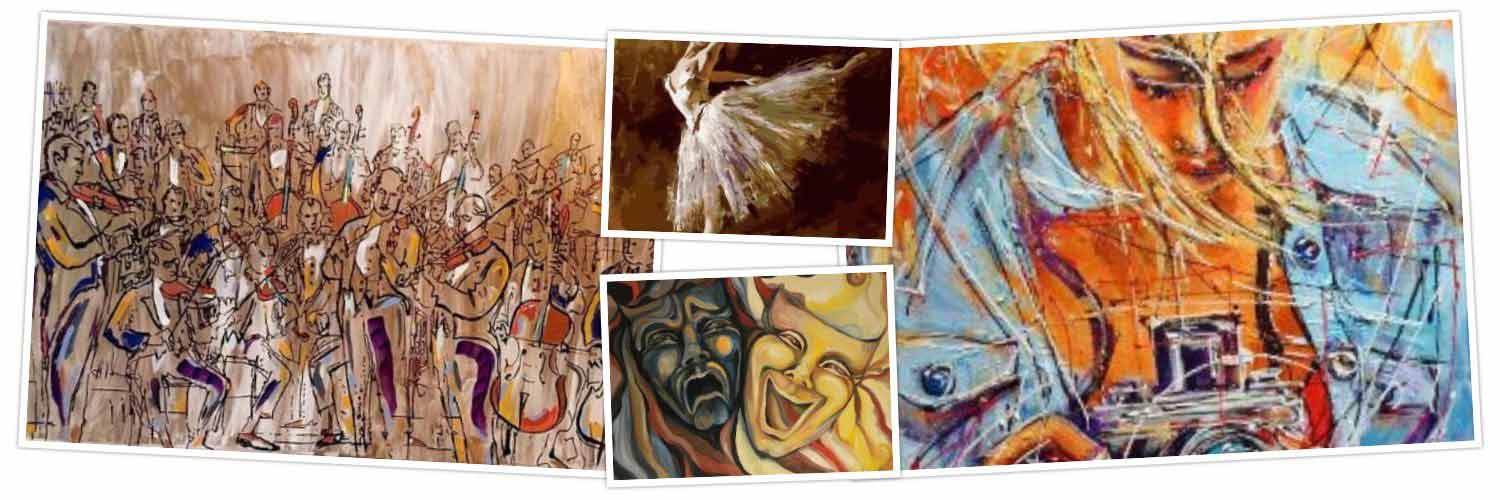
Lucia LaVilla-Havelin’s work is both exquisite and powerful. Thank you so much for featuring her art and her story in this interview!
Thanks for this interview. Lucia Lacilla-Havelin did a Covid pandemic piece called “The Magnificent Seven” which fearured seven essential service workers wearing their masks to work. A reproduction serves as the cover for the anthology, “No Season for Silence: Texas Poers and Pandemic,” featurong poems by Jim Lavilla-Havelin and others.
This was a wonderful read!
Lucia, you are a treasure. Even more so than your absolutely luminous work. Thank you